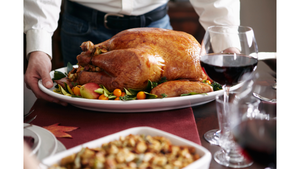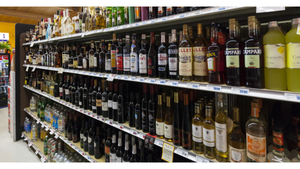PRAISING ARIZONA
PHOENIX -- In this fast-growing region of red-clay desert and cactus known as the Valley of the Sun, it's natural for retailers to highlight fresh fruit and vegetables in their stores. In fact, it's common to find cactus leaves among the regular selection of the various stores recently visited by SN.There are plenty of retailers operating stores in the greater Phoenix area, ranging from independents
October 23, 2000
ROBERT VOSBURGH
PHOENIX -- In this fast-growing region of red-clay desert and cactus known as the Valley of the Sun, it's natural for retailers to highlight fresh fruit and vegetables in their stores. In fact, it's common to find cactus leaves among the regular selection of the various stores recently visited by SN.
There are plenty of retailers operating stores in the greater Phoenix area, ranging from independents like Chandler, Ariz.-based Bashas' (and its upscale subsidiary, AJ's Fine Foods) to coast-to-coast giant Kroger Co., whose local presence is represented under the Fred Meyer Marketplace banner.
And, as the valley becomes a lifestyle destination, natural foods retailers like Boulder, Colo.-based Wild Oats Community Markets are making fast inroads with new stores in which the emphasis on produce is heightened with a strong foundation of customer education.
The store inside Wild Oats Plaza, at the intersection of Scottsdale Road and Shea Boulevard, is a remodeled Abco supermarket where about 1,500 square feet is devoted to a wide variety of conventional, organic and locally grown produce. About 60% of sales comes from organics, with another 20% attributed to local farm items, according to store officials. The figures aren't surprising, since the typical shopper entering the doors here is health-conscious and attentive to environmental and social issues, they added.
The produce section is actually an extra-wide aisle with wet racks flanking either side, and three moveable dry tables marching up the middle. A selection of floral products is merchandised right inside the front door, and a floral service counter is tucked into one corner. Opposite, an open prep area behind a fresh-cut fruit display serves dual functions, according to the store's produce manager: It not only reinforces the fresh-cuts' image, the space also serves as an on-floor receiving area. Moving the process out into the forefront creates an action station of sorts as incoming boxes are packed out. Only about 10% of incoming items are stored in back, officials said.
Along the left wall, a series of wet racks stretching to the rear emphasizes vertical merchandising. Large shelf channels above identify items, prices and classification (conventional, organic or transitional), a key component of Wild Oats' commitment to consumer education. Symbols on each tag correspond to the item's growing method, which in turn are more fully described on large overhead signs hanging in the aisle.
The case-to-case assortment is comprised of free-form stacks and wooden baskets holding loose items. Peppers were there in three colors. The mix also included mushrooms, jimcama, asparagus and even salsa mix, as well as whole prepacked herbs hanging from pegs. This was followed by clamshells of cherry tomatoes, loose peas and bins of more loose items. Sprouts come in many forms here -- radish onion, "gourmet" and garbanzo, to name a few. The in-line series ended with a 12-foot, five-tier case of bagged greens and salad mixes, including organic baby lettuce.
On the right, the open case in front of the prep/receiving area holds a number of packed berries, tropicals and cut fruit on ice. Small, tight displays of mango, coconut and papaya give way to whole and cut melon and cantaloupe. The display changes with each season, though certain items, like the lopes, are consistent and regular mainstays, said officials.
The in-line wet rack along the wall kicks off with organic bagged carrots under Wild Oats' own label, radishes, broccoli and celery, among other top sellers. Loose carrots are stacked and fanned at the top of the vertical just underneath merchandising mirrors -- making a vivid impression. Loose and bagged greens are also found here, including romain, iceberg, greenleaf and butter lettuce varieties. Carrots are used again as color breaks, as well as purple cabbage and black kale, each of which enhance the overall display with their appealing texture. Beets, potatoes and other roots cap the in-line case set.
The first two of three islands in the middle of the floor merchandise stacked apples, pears, citrus, bananas and tomatoes, which are very good sellers right now, said officials. The final dry display is reserved for potatoes, roots and onions.
At the AJ's Fine Foods unit inside Uptown Plaza, Camelback Road and 1st Street, the produce department pallet is splashed not only with color, but variety that includes specialty items like blood oranges, piping melon and sapote. More than just shelf fillers, these goods are actively sampled. On the day of SN's visit, there were self-serve tables offering halved cherry tomatoes and pieces of blood orange. Tastings of unique, or high-margin, items are a regular occurrence at all five AJ's stores, said the produce manager for this unit.
The department's right-side wall includes a total of 64 feet of in-line dry rack, though the first four feet is actually an ice display of fresh-cut fruit in containers and vegetables in plastic party platters. Next, besides blood oranges and star fruit, shoppers will find the cactus pear and sapote, coconut and other exotics. Citrus, four varieties of pears and bagged grapes are piled high and wide. The display ends with onions, leeks and garlic set in bowls.
Produce merchandising is raised to an art form along the 72 feet of wet rack along the left side of the department. It starts off with foot-wide, burlap-lined terra cotta bowls nestled in kale. Here, Japanese cucumbers, baby corn in wrappers and baby cauliflower are stacked carefully, while wax, French and purple beans appear ready to spill over their brims.
The ethnic diversity of the area, and its rich pan-American heritage, are represented with multiple stacks of peppers fanned out atop the terra cotta bowls, tiny cocktail avocados and fresh cilantro. This is followed by nine containers of fresh mushrooms, ranging from oyster to portabello to hedgehog. Next, a loose salad mix of greens, mesclun and nasturtium petals seemingly cascades down another set of nine bowls.
Following a selection of fresh herbs, shoppers find more greens, both stacked and in baskets; conventional carrots, cucumbers, celery, tomatoes and other staples cause a riot of color and hue -- the deep burgundy of beets is balanced against the white in bulbs of fennel; similarly, the bristly tops of shallots appear to support a bed of greens in a merchandising scheme that uses verticals and horizontals to form natural breaks. Bagged greens and salad mixes take up the final 10 feet.
This store uses two giant island tables in the middle of the aisle. The first presented the season's first fresh asparagus and quart containers of cherry tomatoes, the same that were being sampled. The rest of the walk-around was taken up with fresh fruit, including nectarines, red and green apples and long-stem strawberries for dipping in chocolate.
The rear table included a great many sizes, shapes and textures of tomatoes, which are also among the store's bestsellers here, according to officials. Here again, the display is broken up by the use of terra cotta bowls and rectangular planters draped with burlap, holding a variety of roma, cherry and plum tomatoes; kale cabbage unifies the dizzying variety of red.
In neighboring Glendale, shoppers can go to a year-old Fred Meyer Marketplace, at the intersection of 35th and Peoria avenues. This format, though smaller than regular Fred Meyer units, is still large, and the big-box, price-impact formula is clearly at work here. Produce is less artistically presented, but this store, in a middle-class neighborhood, has everything consumers might want.
Only four feet is devoted to organic produce, including oranges, potatoes, red leaf lettuce and even cactus leaf. Packages of tofu and related items are found here. Though demand might be less in this neighborhood because of organic's higher pricepoints, the focus on conventional produce doesn't disappoint: There's a lot of it in this 1,200-square-foot department.
The rest of the in-line display is packed and stacked with numerous greens; red radishes; yellow, red and green peppers; and orange carrots. Along a single top shelf, smaller, more specialty items in baskets are found, including mushrooms. A case perpendicular in the corner houses pre-cut vegetable platters and containers of fruit, as well as bagged salad mixes, for a total of about 30 feet. Here, cubed watermelon and cantaloup chunks have been placed for sale, as well as clamshells of select berries.
The L-shaped section is filled in the middle with eight tables that begin with root vegetables and tubers, as well as loose peanuts and pistachios, ready for bagging. Squash, beans and asparagus sit on a different table, while a third is reserved for tropicals, such as pineapple, papaya and quartered and halved watermelon on ice.
Hothouse tomatoes are given an entire end of one of the next tables, and share space with onions and garlic cloves. There are more than seven varieties of stacked bulk apples, grapes and one-pound containers of strawberries on yet another merchandiser. Bunches of asparagus and artichokes sit on ice at the end of one table.
All the displays are full and offer plenty within each department category.
Inside the front door is another set of smaller merchandiising tables that hit the shopper with price specials.
One featured a sign touting "Low Priced Every Day." Here, extra-large navel oranges sold for $0.99 a pound. A table sporting an "Automatic Price Reduction" placard offered whole watermelons at three pounds for $0.99. The table holding bunches of bananas included a cross-merchandising display of Nabisco's Nilla Wafers cookies.
About the Author
You May Also Like




